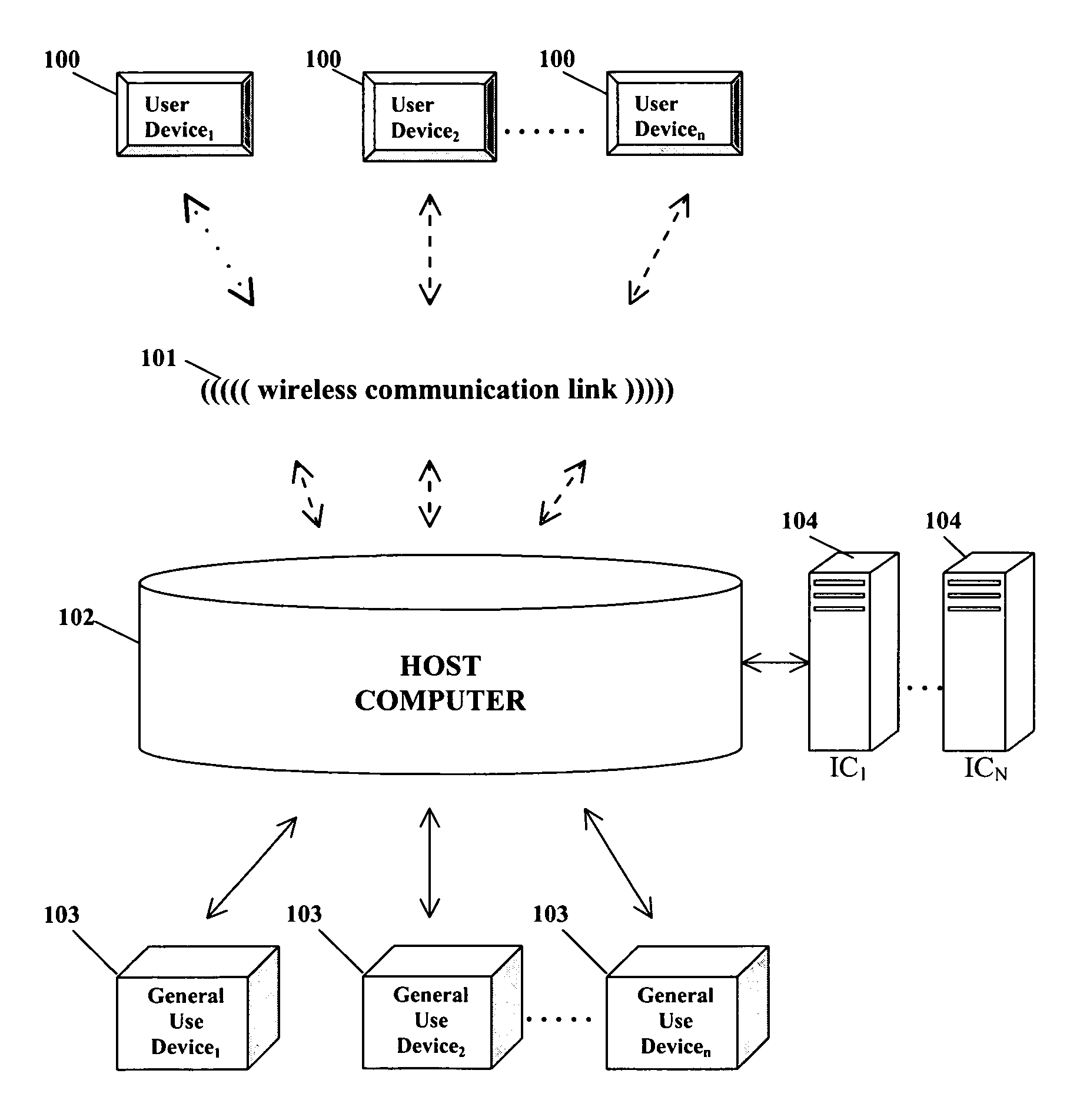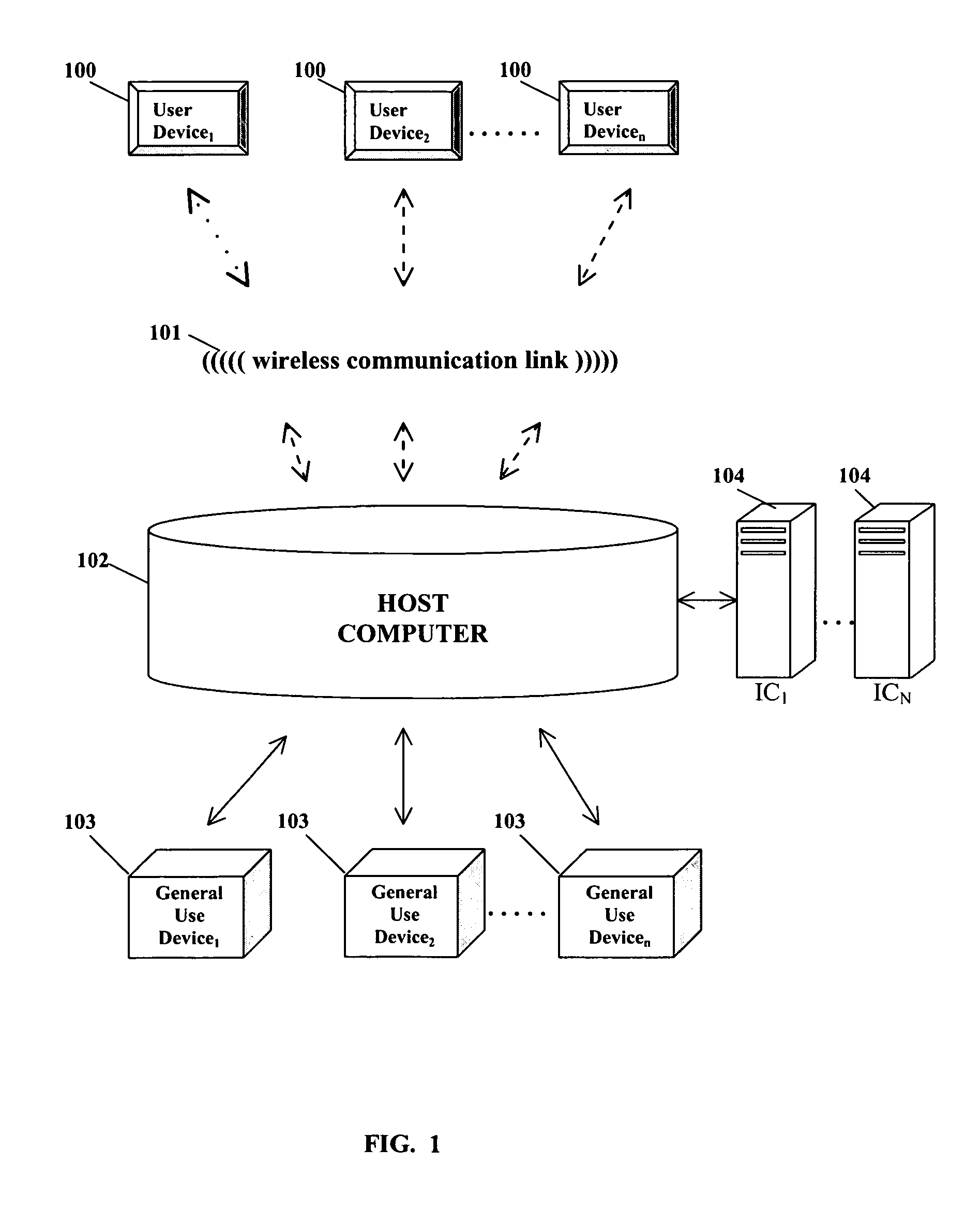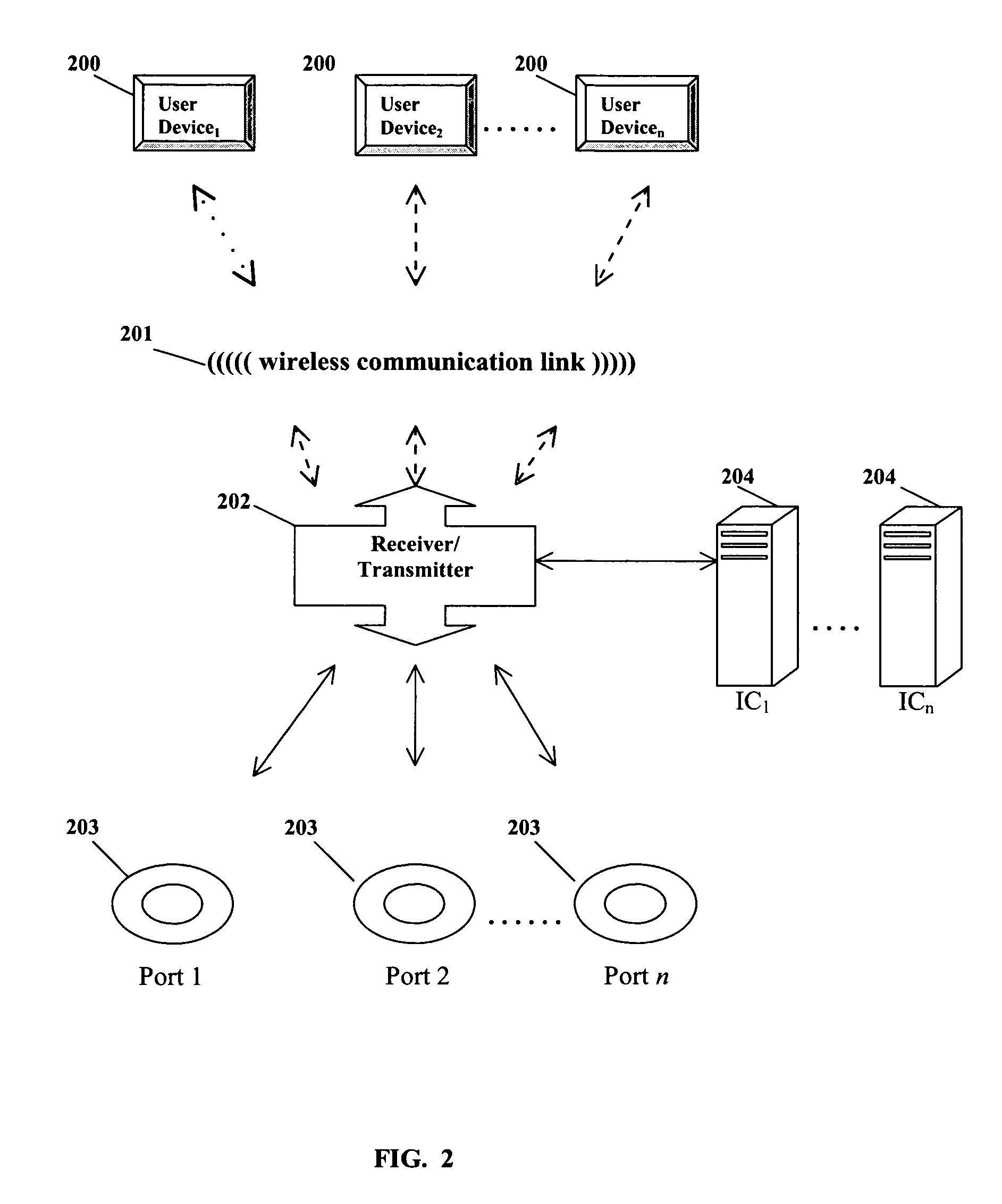Systems and methods for adaptive medical decision support
a medical decision support and system technology, applied in computing models, instruments, biological models, etc., can solve the problems of system efficiency not always increasing to degrees, medical professionals becoming scarcer, and electronic medical systems rarely being adopted
- Summary
- Abstract
- Description
- Claims
- Application Information
AI Technical Summary
Problems solved by technology
Method used
Image
Examples
Embodiment Construction
[0032]Referring now to the present invention, embodiments and examples of which are illustrated in the accompanying drawings, the current invention is directed to a system for adaptive medical decision support. Referring to FIG. 1, the system includes at least one User Device 100. These devices allow users to enter and receive medical data with a Host Computer 102. The User Device 100 comprises a portable computing device that is capable of communicating with other computing devices via a wireless communication link 101. The User Device 100 may comprise any portable computing device suitable for implementing the current invention, including a handheld wireless computing device, a wireless tablet form factor device, or a desktop or laptop computing device. The User Device 100 may also comprise a computing device linked or integrated with a medical instrument. The user interacts with the User Device 100 across a graphical user interface (GUI). In one embodiment of the invention, the G...
PUM
 Login to View More
Login to View More Abstract
Description
Claims
Application Information
 Login to View More
Login to View More - R&D
- Intellectual Property
- Life Sciences
- Materials
- Tech Scout
- Unparalleled Data Quality
- Higher Quality Content
- 60% Fewer Hallucinations
Browse by: Latest US Patents, China's latest patents, Technical Efficacy Thesaurus, Application Domain, Technology Topic, Popular Technical Reports.
© 2025 PatSnap. All rights reserved.Legal|Privacy policy|Modern Slavery Act Transparency Statement|Sitemap|About US| Contact US: help@patsnap.com



